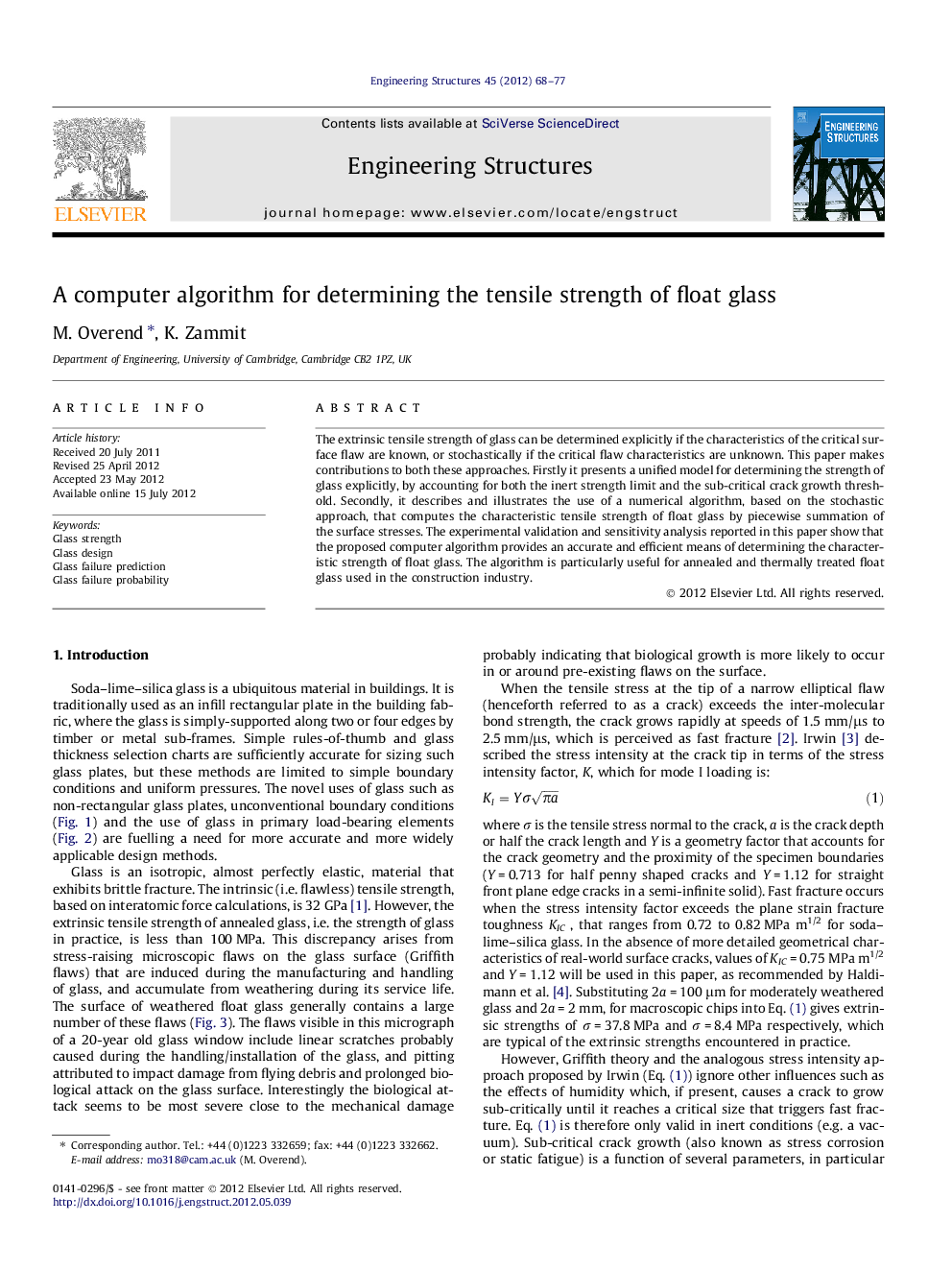| Article ID | Journal | Published Year | Pages | File Type |
|---|---|---|---|---|
| 267112 | Engineering Structures | 2012 | 10 Pages |
The extrinsic tensile strength of glass can be determined explicitly if the characteristics of the critical surface flaw are known, or stochastically if the critical flaw characteristics are unknown. This paper makes contributions to both these approaches. Firstly it presents a unified model for determining the strength of glass explicitly, by accounting for both the inert strength limit and the sub-critical crack growth threshold. Secondly, it describes and illustrates the use of a numerical algorithm, based on the stochastic approach, that computes the characteristic tensile strength of float glass by piecewise summation of the surface stresses. The experimental validation and sensitivity analysis reported in this paper show that the proposed computer algorithm provides an accurate and efficient means of determining the characteristic strength of float glass. The algorithm is particularly useful for annealed and thermally treated float glass used in the construction industry.
► We present an improved glass strength model. ► We present a numerical algorithm for computing glass strength. ► We validate the numerical algorithm experimentally. ► The algorithm reduces computational time. ► The algorithm improves the accuracy of glass strength calculations.
